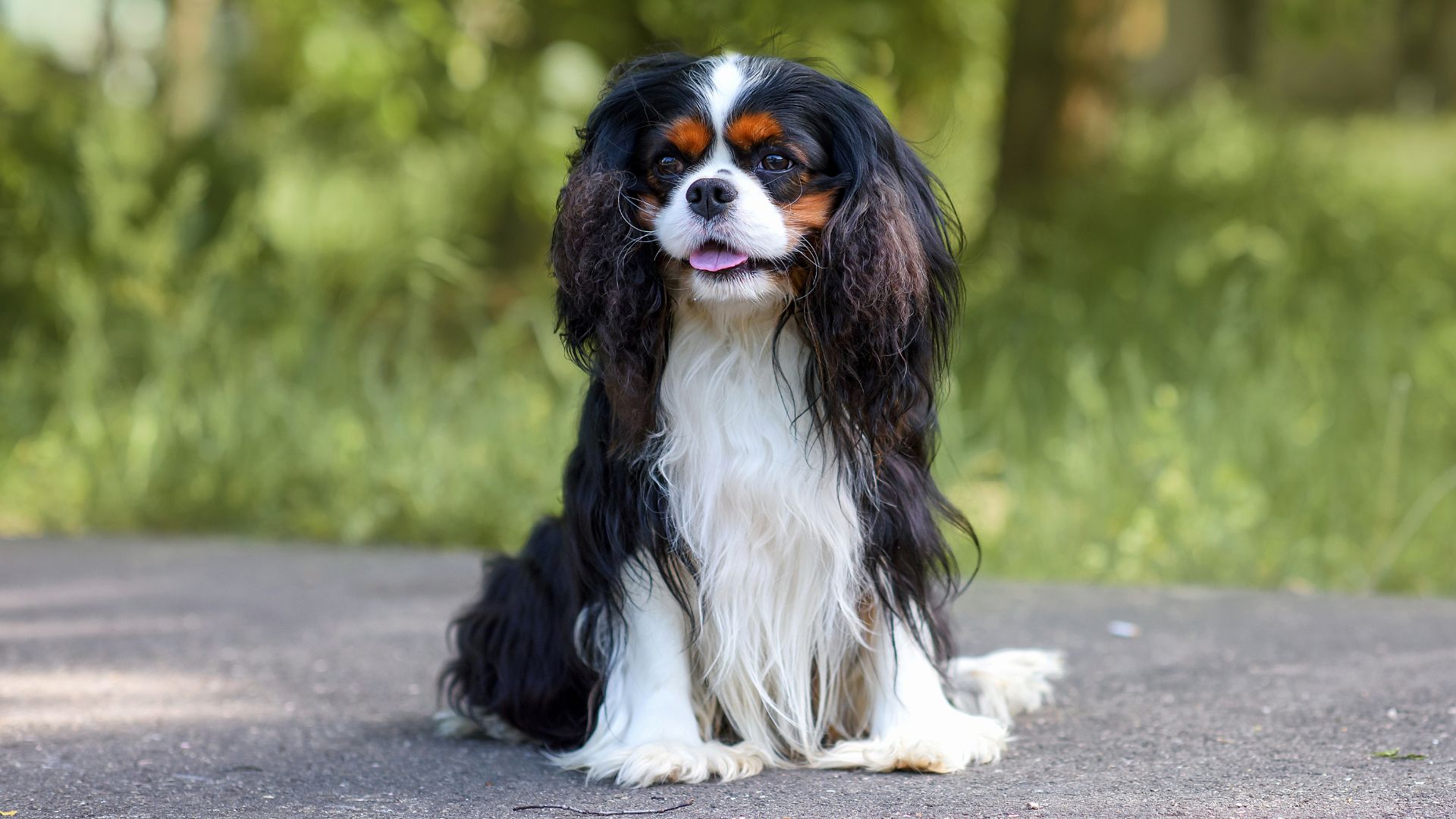Everyone wants peace at home. We try candles, soft music, breathing exercises—but then one loud noise, and the dog loses it.
Suddenly, there’s barking, pacing, and whining, and the calm you worked for disappears in seconds. A panicked dog doesn’t just shake itself—it shakes the whole house. And if you’ve been through it, you know exactly how tiring it can be.
People say dogs pick up on your energy, but what if you’re the one picking up on theirs? You fix your schedule, create a quiet space, and still end up with chaos on four legs.
That’s why some people search differently. They want something steady. Something reliable. A dog that doesn’t crack under pressure. One who stays composed no matter what’s happening around them.
If that sounds like what you’ve been looking for, you’re in the right place. Let’s talk about dogs that never panic.
Dog Breeds That Never Panic
1. Basset Hound
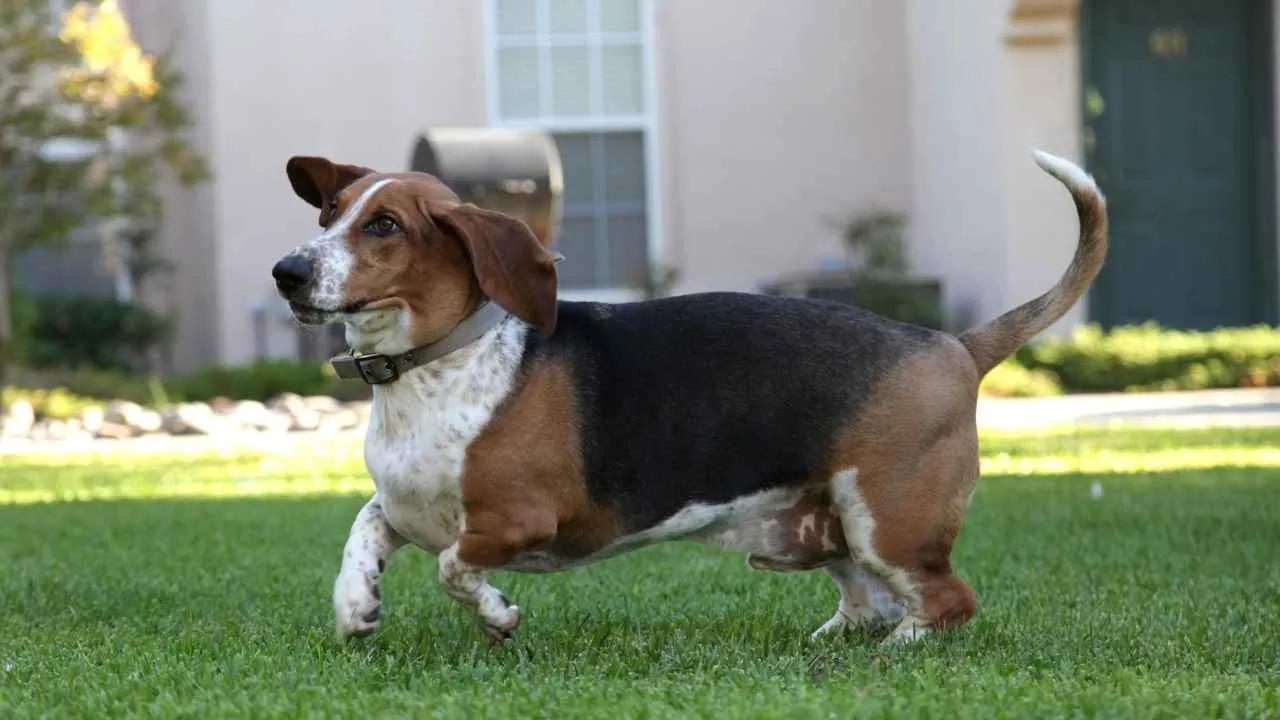
Basset Hounds rarely show signs of agitation, even during sudden loud noises or shifting surroundings. Their slow-paced mindset isn’t laziness—it’s measured composure built into their breed. This makes them ideal for homes where calm energy matters more than quick reactions.
Stable Behavior in New Settings
Whether entering a busy vet clinic or a crowded dog park, they maintain the same slow, steady pace. They process stimulation at their own rhythm, avoiding the nervous spirals seen in high-strung breeds. That inner stillness is part of what keeps them grounded.
Consistency Around Children and Noise
Many dogs react to chaotic energy, but Bassets stay neutral even when toddlers squeal or doors slam shut. They don’t escalate easily, even when their space is briefly invaded. Their consistency creates a secure environment, especially in family spaces.
Sensory Focus Over Emotional Reactivity
Their low-set ears and strong scent drive keep them locked into their environment, but through exploration, not anxiety, as mentioned in Petco. Even unexpected changes don’t rattle them—they investigate without spiraling. That kind of grounded sensory processing sets the tone for a balanced dog’s life.
2. Cavalier King Charles Spaniel
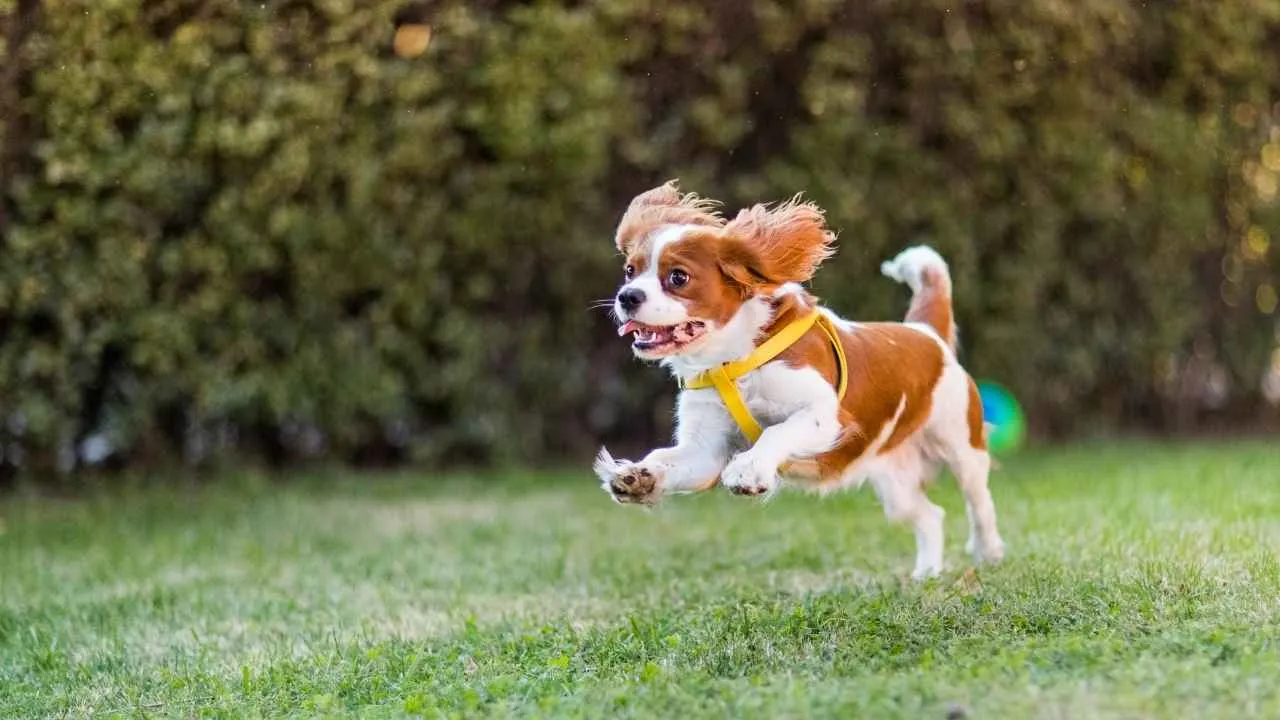
Cavaliers have a natural ability to match the emotional energy of the room without tipping into overstimulation. In environments where sudden tension rises—like a child’s tantrum or a doorbell frenzy—they remain steady, mirroring calm once it’s modeled. Their emotional sensitivity works in favor of stability.
Smooth Adaptation to Daily Routines
This breed doesn’t resist changes in schedule or unfamiliar people entering the home. Whether it’s a last-minute visitor or a sudden trip to the vet, they adjust with minimal disruption. That smooth rhythm makes them easy to integrate into unpredictable living spaces.
Minimal Reactivity in Crowded Spaces
They don’t flinch at clattering carts in hospital corridors or loudspeakers in elevators. Cavaliers tend to process environmental shifts without freezing, barking, or pacing. These are the moments where other dogs’ anxiety may surface, but this breed stays comfortably composed.
Clear Behavioral Signals for Support
If a dog shows signs of tension, they often mask it or escalate unpredictably, but Cavaliers express discomfort early and subtly. This gives pet parents time to adjust before stress builds. It’s not just about calmness but about transparency in communication, which creates predictability for handlers.
3. Clumber Spaniel
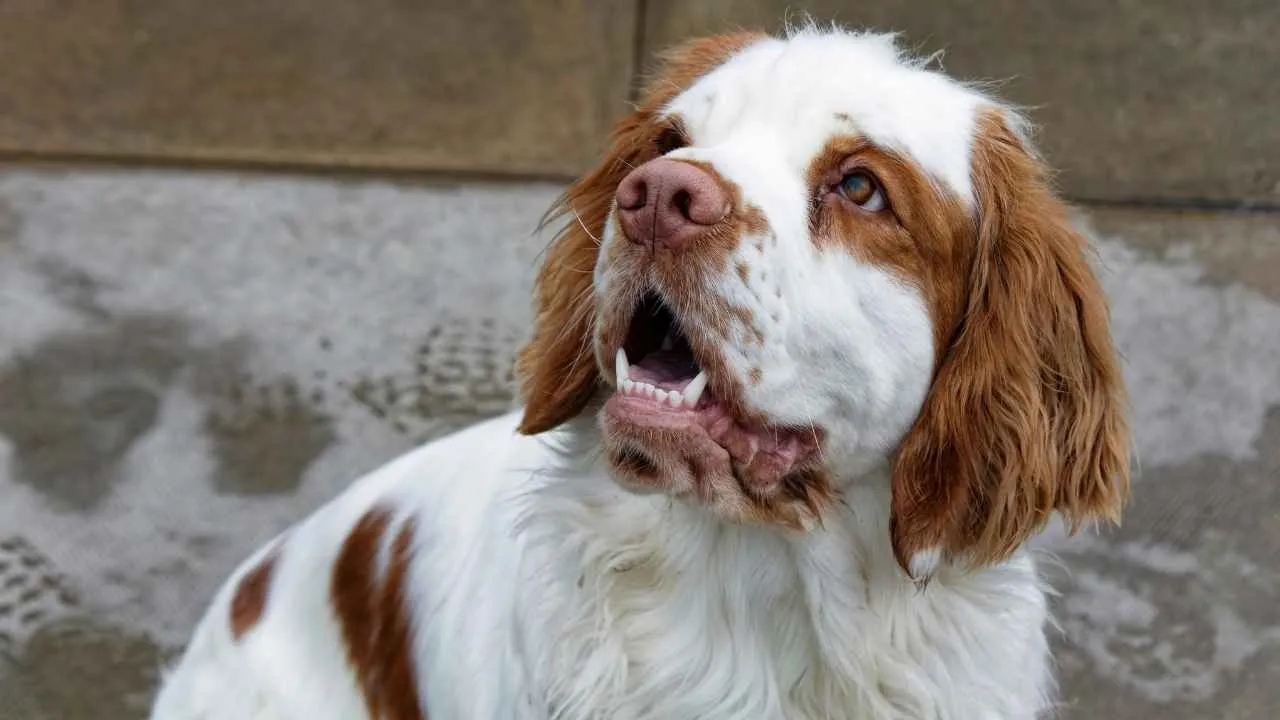
Clumber Spaniels process situations with noticeable deliberation—never rushing into loud reactions or unnecessary energy. Their slower pace isn’t laziness; it’s calculated steadiness that keeps them grounded, as per Showsight Magazine. Even in noisy or unfamiliar settings, their expression rarely shifts into distress.
Calm in New Social Settings
They show an unusual tolerance for crowds, new faces, and routine interruptions without spiking in arousal. You’ll see it in their body language—ears steady, eyes observant, posture relaxed. That composed response allows them to blend in seamlessly, even when their surroundings are unpredictable.
Emotional Sync With Their Handler
What makes them so stable is their attention to the energy of the person guiding them. They mirror the tone of a calm handler, creating a feedback loop that maintains emotional neutrality. Their bond depends less on commands and more on shared tempo and consistency.
Low-Reactivity Without Apathy
They require gentle mental stimulation to stay balanced, not because they get hyper, but to prevent dullness. Even during correction or sudden disruptions, they don’t overreact or become defensive. This steadiness makes them reliable companions in environments that demand quiet resilience.
4. Irish Wolfhound
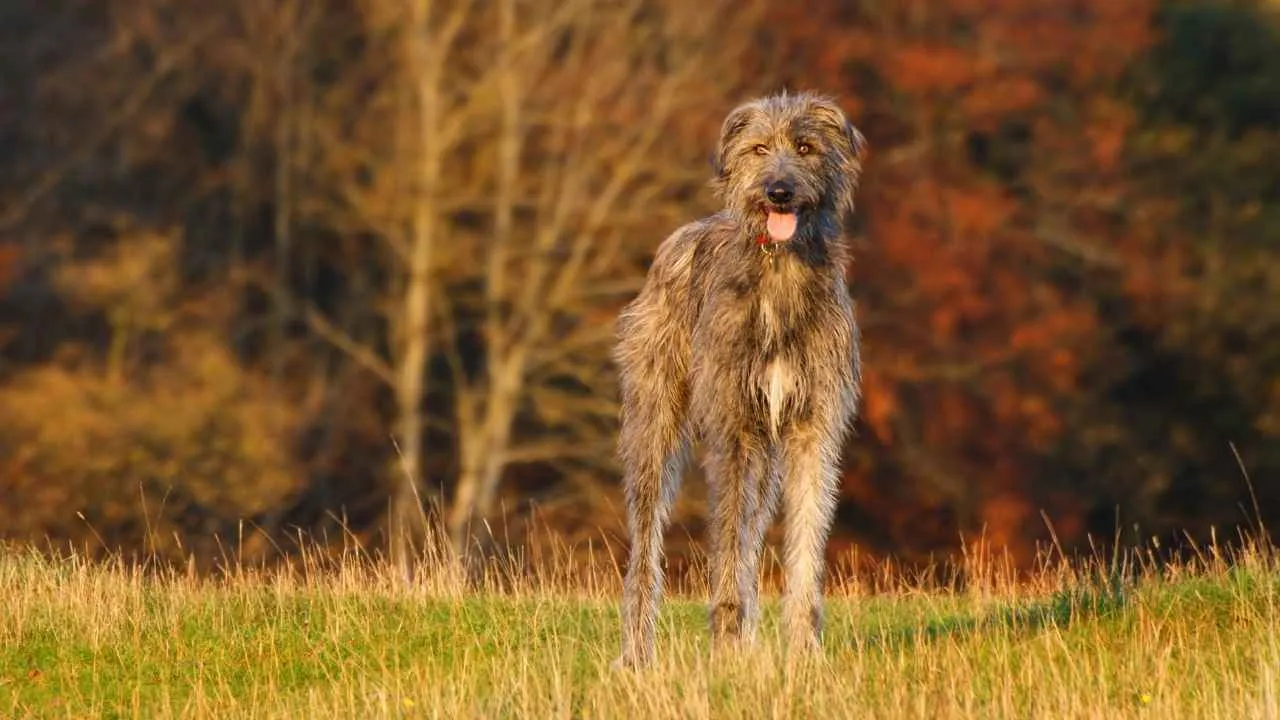
Even at full sprint, Irish Wolfhounds rarely carry tension in their frame—movement stays fluid, posture unbothered. Their sheer size could make them intimidating, yet their default state is observant silence. Startling noises or sudden activity rarely translate into a visible alarm.
Even at full sprint, Irish Wolfhounds rarely carry tension in their frame—movement stays fluid, posture unbothered. Their sheer size could make them intimidating, yet their default state is observant silence. Startling noises or sudden activity rarely translate into a visible alarm.
Subtle Sensitivity to Human Pace
They’re deeply in tune with human rhythms, responding more to motion and pauses than verbal commands. This gives them an edge in non-verbal situations where training doesn’t rely on cues, but presence. The breed reads the room energy without absorbing tension.
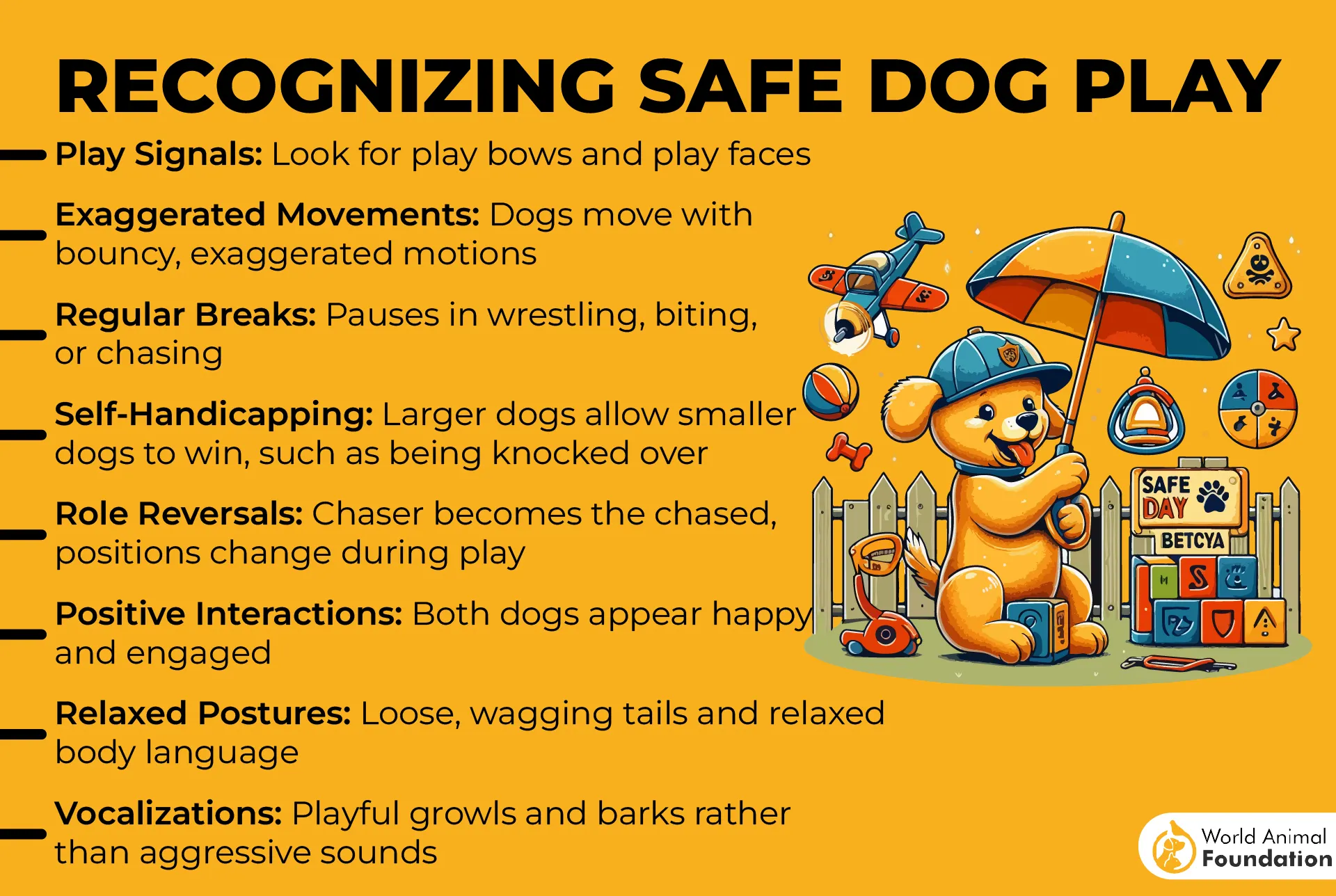
Comfort Over Energy Surges
Rather than chase every stimulus, they naturally settle near where movement slows. Long limbs fold quietly into shaded corners, prioritizing great comfort over hyperactivity. This is what keeps them a happy dog in settings that would overstimulate more alert breeds.
5. Newfoundland

Newfoundlands have been used in maritime rescues for over a century, not for speed, but for staying calm when others panic. Their steadiness in waves or during unpredictable water rescues is instinctive. It’s that deep-rooted calm under pressure that defines their reliability.
Protective Without Reactivity
They assess before reacting, even when strangers approach or children are loud nearby. Their sheer size might suggest aggression, but their good behavior comes from stable nerves and solid early socialization. They maintain presence without ever posturing or escalating a situation.
Ease in Household Chaos
Even in homes with clatter, sudden movement, or multiple pets, Newfoundlands keep a low-arousal profile. It’s common for them to feel comfortable lying in the center of activity without seeking escape or control. Their patience helps diffuse tension rather than absorb it.
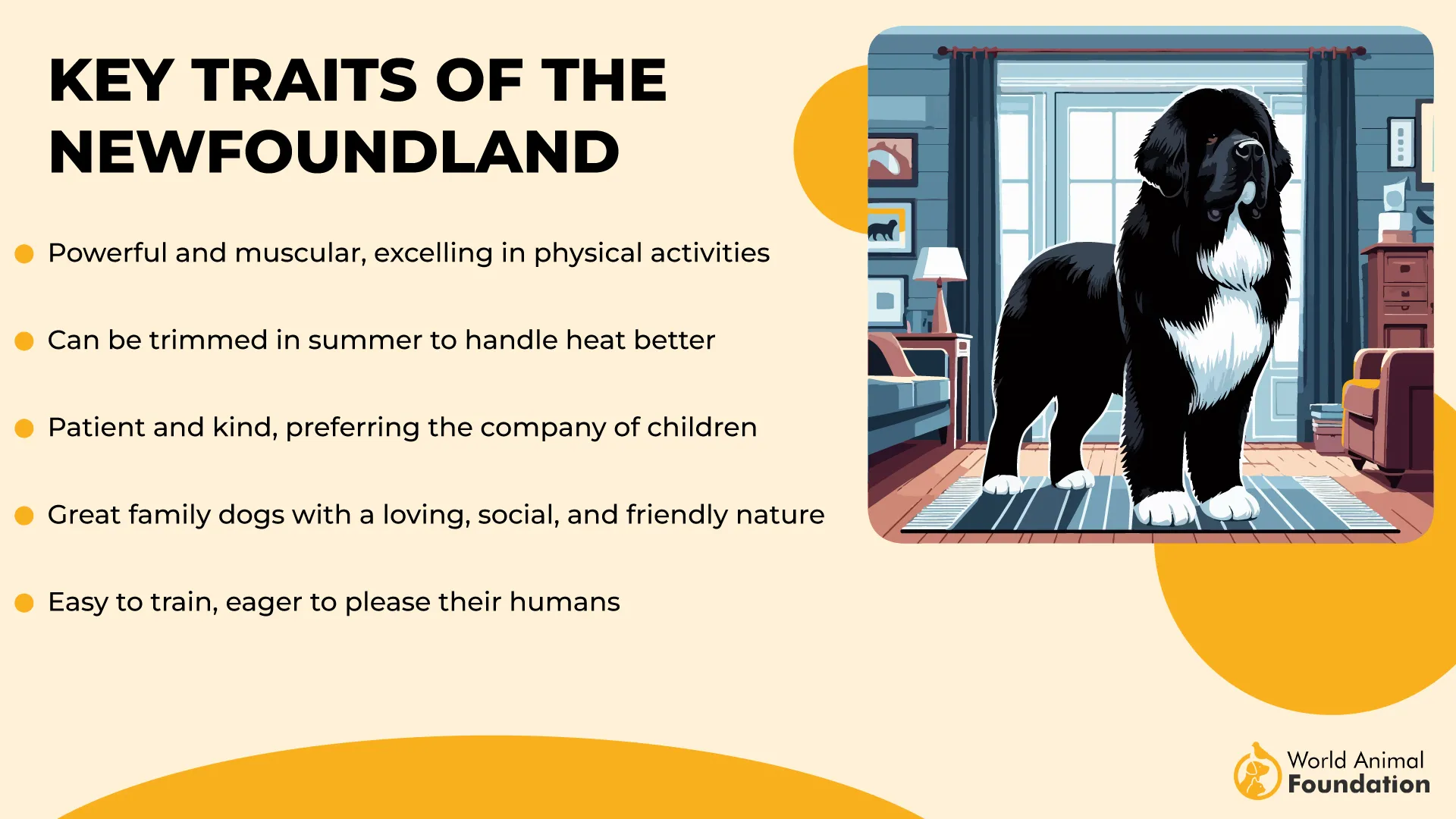
Emotionally Tuned to Their People
This breed watches closely for shifts in energy or stress, using subtle cues rather than barking or jumping. That attentiveness helps them stay emotionally regulated, especially around a sensitive family member. Their calm isn’t trained—it’s built into their temperament.
6. Pekingese
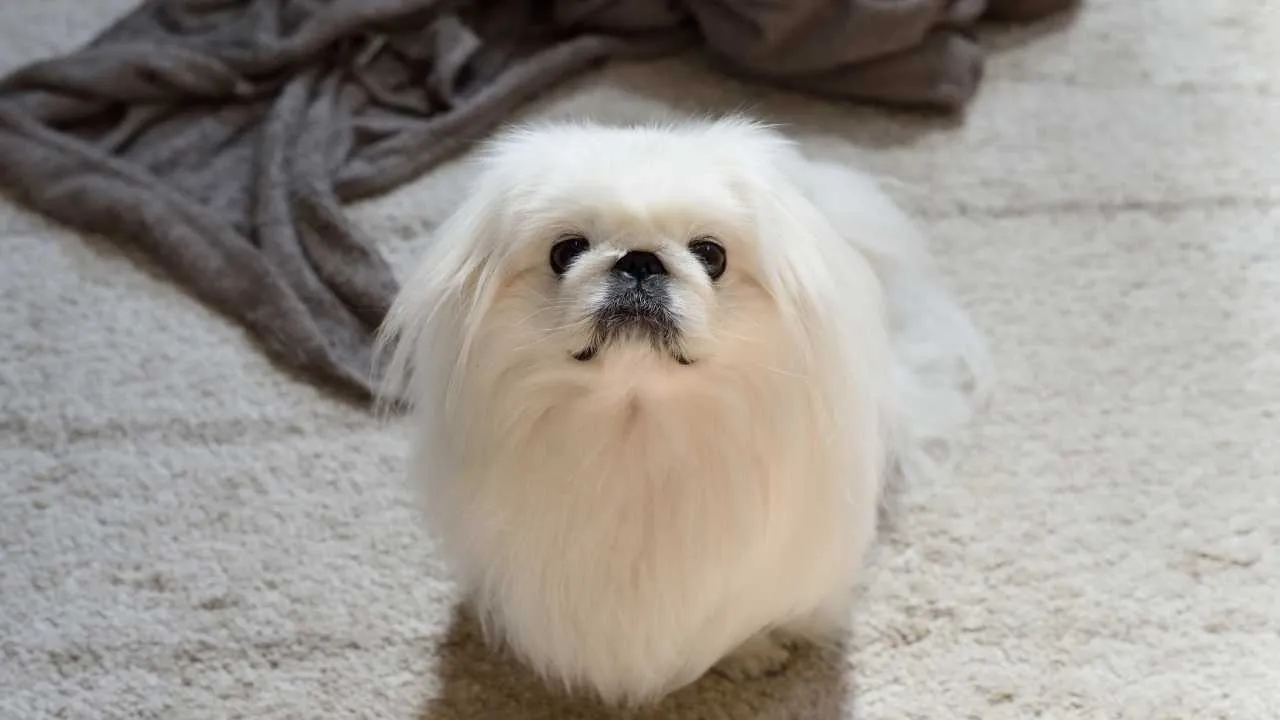
The Pekingese tends to stay unbothered by noisy environments or sudden commotion. They observe without rushing into reaction, even when other breeds are agitated. That stillness makes them stand out in settings where many small breeds typically escalate.
Emotionally Disconnected From Chaos
They don’t sync with high energy in the room, which prevents spirals of anxious behavior. Whether it’s visitors, vacuum noise, or other pets running around, they don’t internalize the buzz. Instead, they maintain their own emotional rhythm without needing to reset.
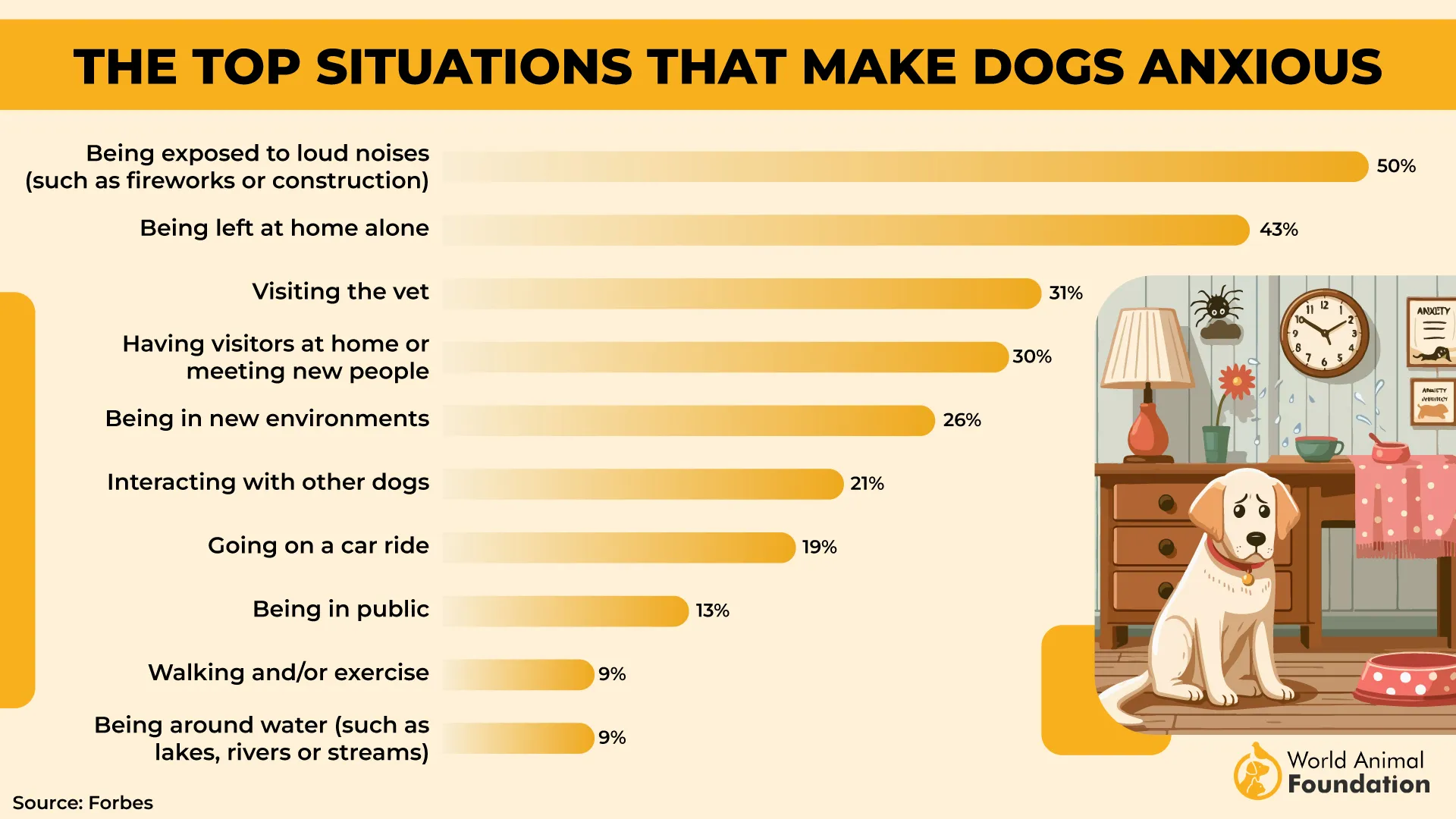
Stability Without Overtraining
Most of their calm behavior develops naturally, with very little need for behavior modification. Even positive reinforcement is less about shaping responses and more about strengthening routines they already prefer. Their low reactivity rarely needs adjusting once they’re settled.
Stillness That Doesn’t Signal Exhaustion
Pekingese often stay in one spot for long stretches, watching or resting without fuss. That quiet doesn’t mean they’re a tired dog—it reflects a calm that doesn’t fluctuate easily. They process changes slowly, which helps them avoid sudden bursts of panic or resistance.
7. Saint Bernard
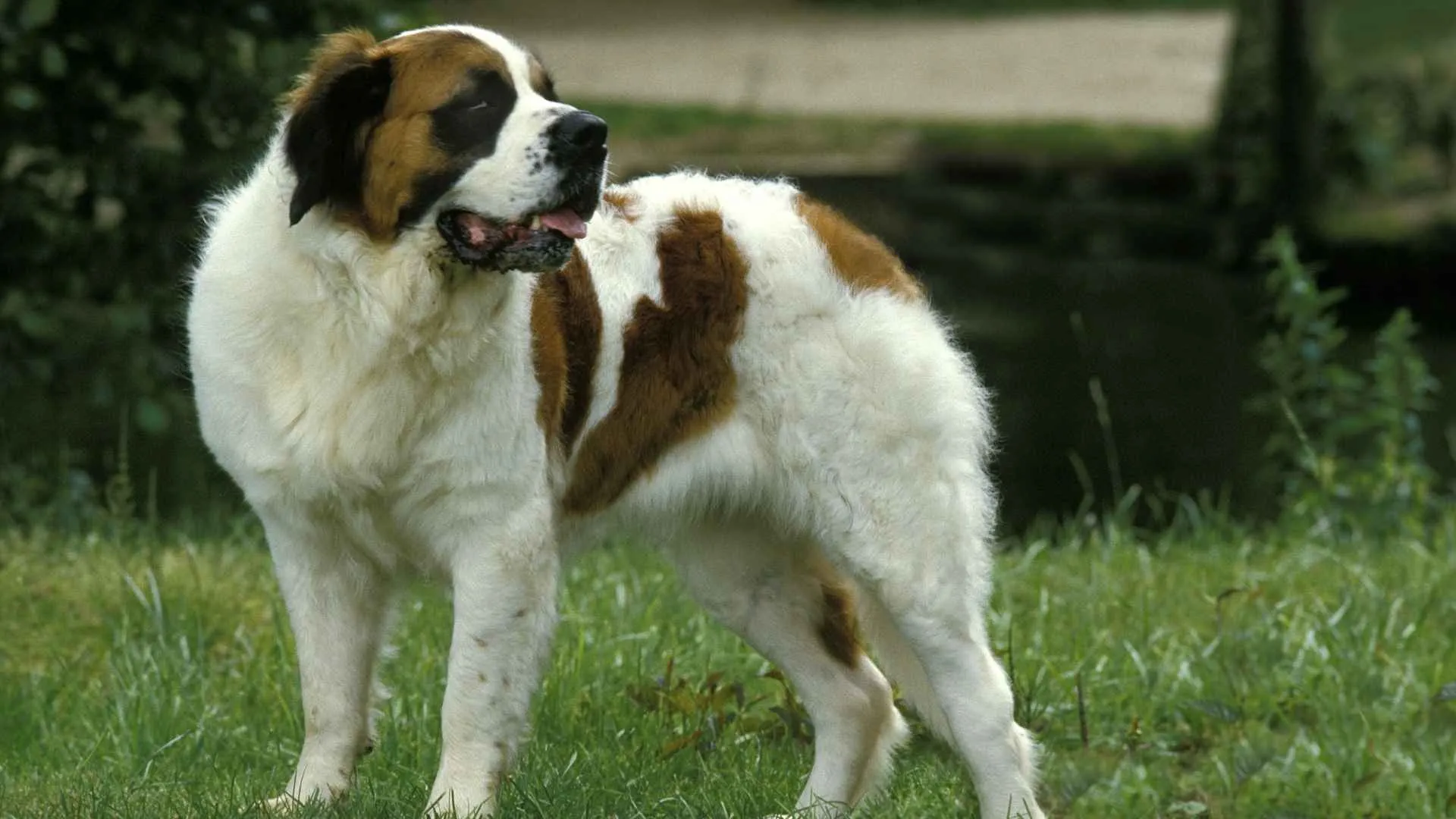
Saint Bernards were bred to navigate avalanche zones, where panic cost lives, as Citizen Shipper highlighted. That origin gave them a deeply embedded calm under pressure, especially in low-visibility or harsh weather. Their response rate stays stable even when other breeds show immediate alarm.
Reading Trouble Without Escalation
They’re excellent at noticing subtle signs of discomfort in others—human or animal—without reacting impulsively. Whether it’s a tense gait or a change in tone, they don’t respond with chaos, but with slow positioning or quiet presence. Their calmness de-escalates tension before it spreads.
Staying Put When It Matters
One unique trait is their ability to remain in position for several hours without vocalizing or pacing. This trait was vital during mountain rescues where movement could worsen the situation. Even today, they can stay motionless if the setting calls for stability.
Processing Before Reacting
When startled, they often pause instead of reacting, mentally checking for the underlying cause before choosing how to respond. That hesitation is not confusion—it’s calculated control. It’s especially useful in homes with sudden stimuli like alarms, shouting, or clattering metal.
8. Tibetan Spaniel

Tibetan Spaniels were bred in monasteries, often perched on high walls where they monitored vast grounds in silence. That instinct to observe calmly from a distance is deeply wired. Heightened views don’t trigger restlessness—they settle into stillness, no matter the surrounding motion.
Intuition That Reads a Room
They can identify shifts in mood before sound or movement even begins. It’s not about training—it’s a built-in ability to read patterns, detect shifts in energy, and adjust accordingly. That kind of anticipation keeps them anchored, not startled, in fast-changing moments.
A Self-Possessed Indoor Watcher
Even indoors, their eyes are constantly scanning, but their bodies remain still, alert without agitation. This internal sense of place lets them regulate themselves, even when visitors arrive unannounced or environments shift unexpectedly. Panic simply doesn’t register in their natural rhythm.
Emotional Independence
Their bond with their owner doesn’t involve clinging or overreaction when separated. They’re content with quiet spaces, often choosing observation over interaction. This self-contained confidence keeps them steady during noise, isolation, or anything that would trigger worry in more dependent breeds.
9. Whippet

Whippets are capable of explosive speed, but what defines them is how quickly they shut off that energy. The moment the chase ends, so does the adrenaline. That rapid downshift makes them uniquely calm indoors, never pacing or building tension over time.
Controlled Startle Reflex
Sudden sounds or movements don’t throw them into reactive spirals. Instead of barking or bolting, a Whippet will pause, visibly analyzing with steady eyes before choosing a response. Their nerves remain low even when startled, which is rare among sighthounds.
Built-In Emotional Reserve
They tend to withdraw silently during stress rather than lash out or vocalize. That internalized coping means they don’t escalate in crowded or chaotic spaces. Even in overstimulating environments, their tension is managed inward, not outward.
Observational, Not Invasive
Whippets rely heavily on reading body language—watching people and animals without pressing into their space. They notice everything but stay hands-off, maintaining emotional distance that helps avoid overstimulation. This detachment helps them navigate busy environments with clarity.
Conclusion
Calm dogs aren’t just easy to live with—they change the entire atmosphere of a home. When noise doesn’t shake them and chaos doesn’t rattle them, you feel it too. That energy spreads.
For people dealing with anxious dogs or trying to prevent behavior problems from getting worse, choosing the right breed from the start makes all the difference. Some dogs may develop destructive behaviors or even health issues just from living in high-stress spaces.
Others help reduce anxiety by simply staying grounded. These breeds don’t just survive noise and change—they help you manage it better, too. And while all dogs need care, these steady companions tend to be especially helpful around senior dogs or pets with anxiety issues.
If peace is your goal, it starts with choosing a dog who brings it with them. One who doesn’t flinch when life gets loud.


